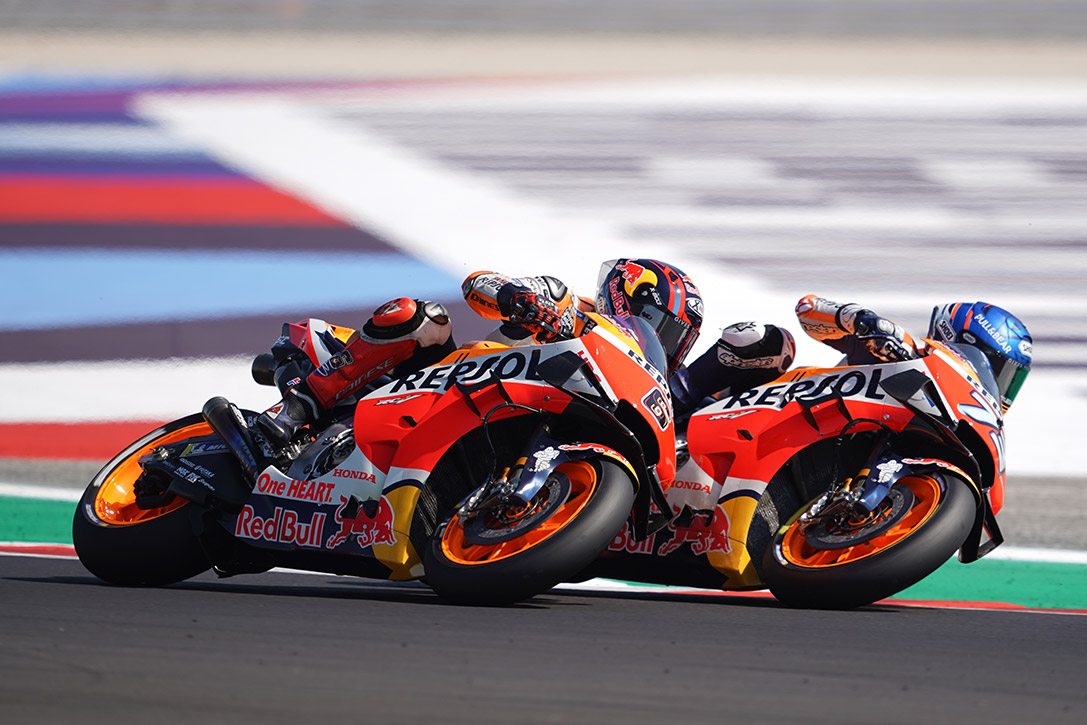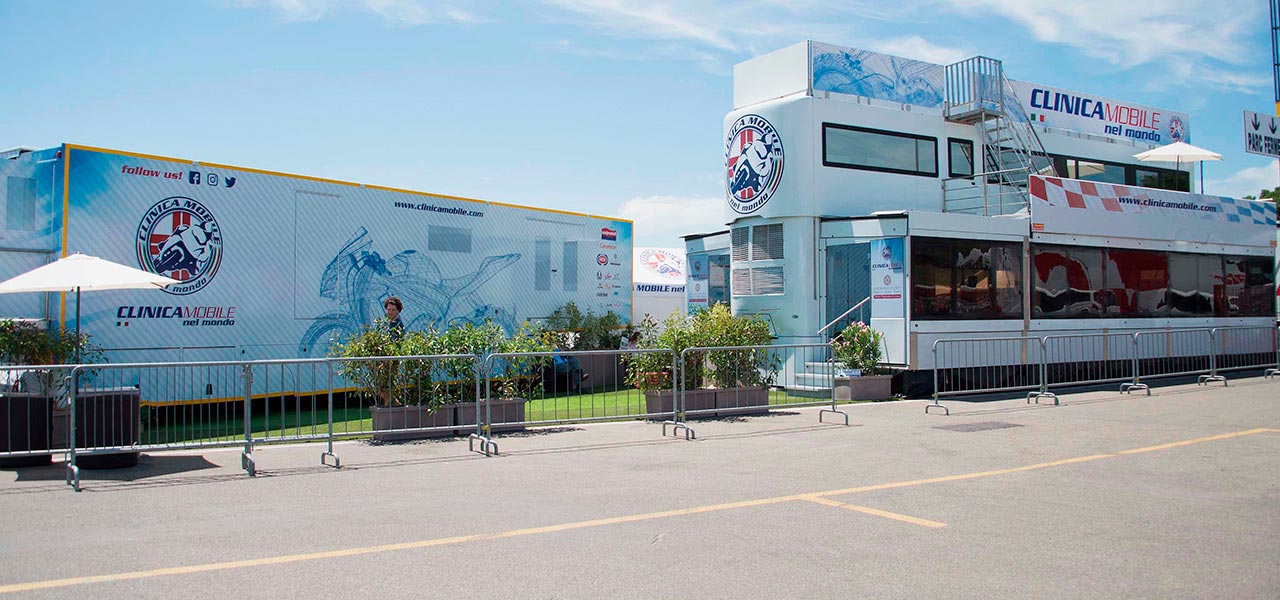Where the stewards cannot see, there are security cameras covering the perimeter of the track
MotoGP safety: Stewards’ posts
Stewards are not only there to make sure that the regulations are met, they are also are one of the most effective safety features around. Watching each section allows them to evaluate at all times whether the track is in a suitable condition for racing. If it isn’t, they can inform the race management and they can even use the appropriate flag to indicate to a rider what the conditions of the track are like or in other situations, such as mechanical problems or disqualification. They are also the first to go down to help the riders if an incident occurs. They are one of the most important parts of the MotoGP safety.


The Airfence: maximum MotoGP safety
This is an inflatable barrier placed on the sides of the circuit. Since Airfences are filled with air, they are excellent shock absorbers and their purpose is to absorb the impact of the rider and bike to minimise any damage. The Airfence is most often seen in run-off areas at turns that have limited room for manoeuvring. It is not necessary to have one all the way around the circuit, just at the points where the impact trajectory would be short and direct.


Gravel or pozzolan traps
A pozzolan trap is a large area covered with gravel that is deep enough to stop a rider who goes off the track without hurting him. They are placed on run-off areas at turns and on high-speed stretches. When a rider enters one, he will usually fall due to its depth, unless he is able to ride out of it as Marc Márquez did in the 2017 Valencian GP! The gravel that covers the trap is made up of very small stones, so it is less abrasive than it appears.


Asphalt run-off area
On some turns or particular sections, there is an asphalt run-off area before the pozzolan trap. This is a relatively small space if we compare it with a gravel trap, but it allows a rider to correct his trajectory and return to the track with only a slight time penalty and possibly moving back a few places. But it’s much better than falling!
Fire extinguishers
On high-speed circuits like those that host GPs, there’s an enormous number of combustible items that can easily catch fire and many others that reach very high temperatures. The risk of a fire is a very real danger, and fire extinguishers are placed all around the track to control it. They are easily identifiable by their warning signs and there is always be a steward on hand, ready to act if necessary.


Medical team
There are several teams watching the track from close by who will act if an accident occurs. Firstly, there is the medical car, which is able to attend to riders on the track. If necessary, a helicopter will come into action to safely carry away an injured person. In addition, not far away is the Clinica mobile to attend to people right on the circuit.
If one of these three items is not working for some reason, the race cannot take place. This was what happened in the classifying round in Motegi in 2009, when the helicopter could not fly because of fog and the race was cancelled.
Other parts of the MotoGP safety
Where the stewards cannot see, there are security cameras covering the perimeter of the track. Also, all personnel close to the track must wear identifying reflective vests that not only make them more visible but also let them be recognised by their jobs (doctors wear white vests, for example). Lastly, everyone on the track must wear a helmet, including the mechanics in Pit Lane.


 Join Us
Join Us  Join Us
Join Us 